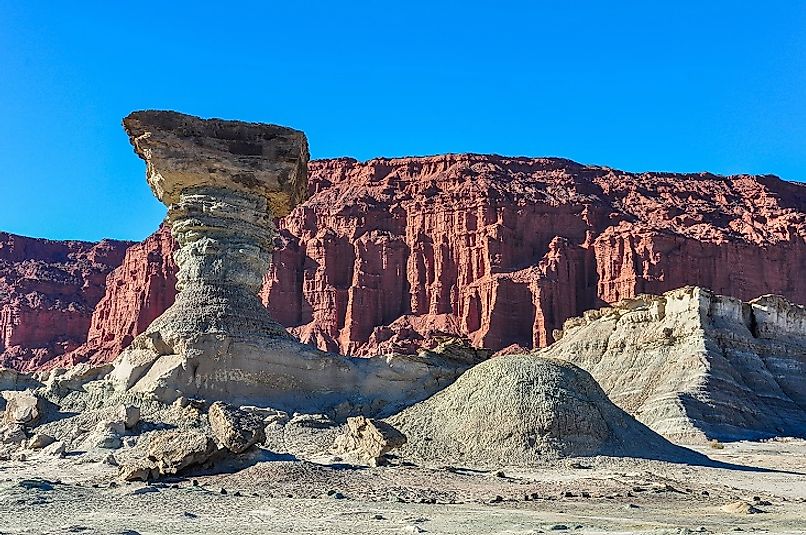Ischigualasto Provincial Park - Unique Places Of Argentina

5. Description
The UNESCO World Heritage Site of the Ischigualasto Provincial Park is located in the San Juan Province of north-west Argentina contiguous to the Talampaya National Park in the north. The park is also known as the Valle de la Luna, Spanish for Valley of the Moon because of its unique landscape and geological formations that appear to belong to some other planet or the moons of the solar system. Designated as a provincial park on November 3rd, 1971, the Ischigualasto Provincial Park currently encompasses an area of 60,370 hectares. It is a hotbed of paleontological discoveries, hosting a vast treasure of fossils of prehistoric animals and plants.
4. Historical Role
The data obtained from radio-carbon dating suggests that the Ischigualasto Provincial Park was inhabited by humans as far back as 2,590 to 950 years ago. The discovery of cave shelters, ancient human art forms on walls of caves and rock surfaces and tool building sites prove that humans did live in the area during this time. There is also evidence of the land being occupied by several indigenous tribes practicing a hunter-gatherer lifestyle in the park area before the arrival of the Europeans in the region. It is also believed that some influence of the Incan culture was also present in the region and that the ancient Incans mined for gold in the Mount Famatima, located close to the Ischigualasto Provincial Park.
3. Significance to Paleontology
The Ischigualasto Provincial Park is a treasure trove for paleontologists. The region is particularly famous for its excellent preservation of specimens of living organisms belonging to the Late Triassic period and gives scientists a significant insight into the events that led to the transition from a world dominated by dinosaurs to the development of early mammalian life on our planet. Among the tetrapod fossils excavated at the park, those belonging to cynodonts and Rhynchosaurs are the most numerous. 11% of all the fossils discovered at the park belong to dinosaurs of which the terrestrial carnivores appear to dominate the scene.
2. Geology and Biodiversity
Both the Ischigualasto Provincial Park and the Talampaya National Park are part of the Ischigualasto-Villa Unión Triassic geologic basin that was formed during the Triassic period and is preserved in the form of 6 distinct layers of sediments, laid down by flowing water bodies over a period of millions of years, with specimens of prehistoric life forms buried within these layers. Today, the Ischigualasto Provincial Park has a predominantly desert type of flora comprising of cacti, bushes and a few trees over 10-20% of its surface area. The fauna species present here today comprise of 27 mammalian species , 77 birds and a few reptilian and only 2 amphibian species. Some of the notable animal species of this arid habitat include the white-bellied opossum, the guanaco, puma, an endemic armadillo species, and pampas foxes. Andean condors, the greater and lesser Rheas, hawks, and white-throated cacholotes represent the avian fauna of the park.
1. Environmental Threats and Conservation
Though there are no major threats to the Ischigualasto Provincial Park, some human activities if not checked early might adversely impact the habitat of the park in the future. Since the park’s land is not suitable for cultivation or cattle raising, there are no threats from human encroachment on this land for these purposes. However, there is always a threat of poachers approaching the park to hunt animals living within it. Thus, the park staff needs to be adequately equipped to stop these poachers from hunting down the park’s protected, rare and threatened species. The heavy tourist footfall at the Ischigualasto Provincial Park also happens to create pollution in the form of toxic gases released by vehicular traffic and litter and waste generated by the tourists. Conservation efforts are currently trying to ensure the above-mentioned threats do not exist so that the prehistoric fossils and modern life forms of his park are not lost forever.







